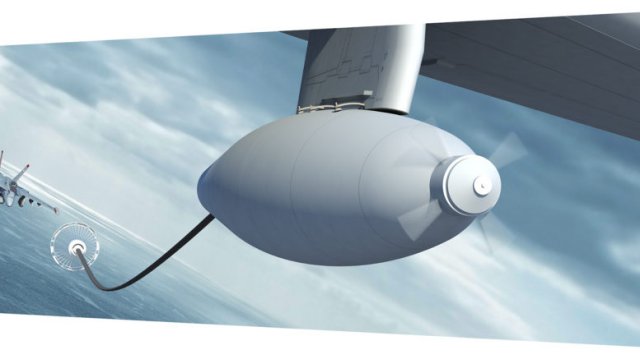
Lockheed Martin MQ-25A Concept. Lockheed Martin Image
USS Dwight D. Eisenhower (CVN-69) and USS George H.W. Bush (CVN-77) will be the first two carriers to field the Navy’s MQ-25A Stingray unmanned aerial refuelling tanker, a spokesperson told USNI News.
The two carriers will receive upgrades to include the control stations and data links needed to control the tanker, Naval Air Systems Command spokeswoman Jamie Cosgrove told USNI News.
Bush was the first carrier to have an unmanned aerial vehicle to perform an arrested landing on its flight deck in 2013 in a test of the Northrop Grumman X-47B UAV.
It’s unclear when the Norfolk-based carriers will be upgraded, but several sources have told USNI News that Chief of Naval Operations Adm. John Richardson intends to accelerate the deployment of the Stingray and get it on carrier decks as early as 2019.
The aircraft is in high-demand because it would help alleviate the burden on the carrier air wing’s current refueling aircraft: the Boeing F/A-18E/F Super Hornet. Anywhere from 25 to 30 percent of Super Hornet sorties are used for refueling missions, USNI News has previously reported.
A Navy spokesperson told USNI News on Monday the program was “too pre-decisional” to comment on the operational introduction of the MQ-25A tanker.
Service leaders have said they wanted the capability by 2020.
Northrop Grumman’s X-47B is loaded Monday onboard the USS George H.W. Bush (CVN-77) for a planned May, 14 2013 catapult launch. US Navy Photo
The service is set to release the request for proposals (RFP) to the four competitors for the business – General Atomics, Lockheed Martin, Boeing and Northrop Grumman – later this year.
The Fiscal Year 2018 proposed budget included $222 million for research and development of the MQ-25A.
News of the first carriers set for the MQ-25A introduction comes as the Navy decided to reprogram $26.7 million for control systems and data link installation the MQ-25A will need to operate from an aircraft carrier, taking that money from the USS George Washington (CVN-73) during its four-year midlife refueling and complex overhaul (RCOH) in the Fiscal Year 2017 budget.
Most of the attention for the Stingray program has been on the air segment, the data link and control stations make up the other two-thirds of the program and are being developed by the Navy inside NAVAIR.
While the Stingray program cycled through several iterations – the low-observable and heavily armed Unmanned Combat Air System (UCAS) and the subsequently blended light-strike and long-endurance surveillance UCLASS created drastically different concepts for the airframes – the fundamental work of the links and the control stations remained largely unchanged. The data link and control station will also be able to interface with future unmanned airframes as they’re developed for the service.
Through the churn of the requirements for the air segment, the Navy has not outlined its next steps for unmanned carrier aviation beyond the limited goals for the MQ-25A.
However, the UCLASS control system will be able to quickly add new aircraft to capable carriers, USNI News understands.
Source: USNI News

